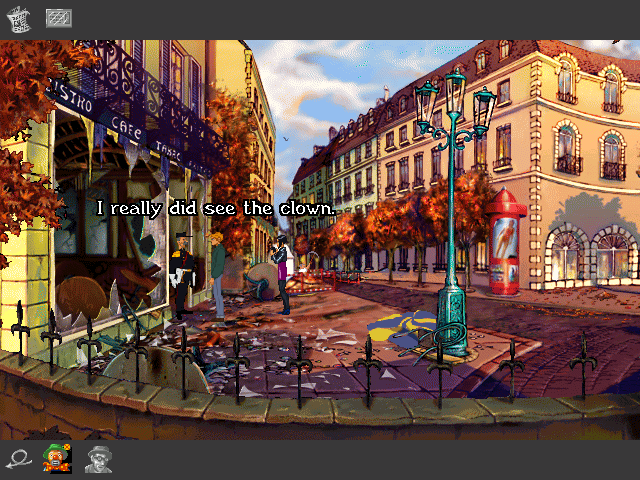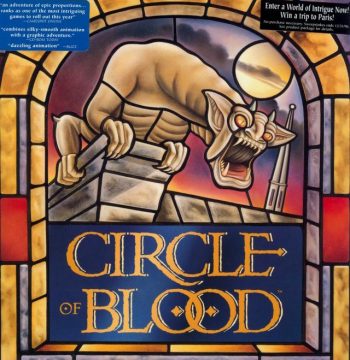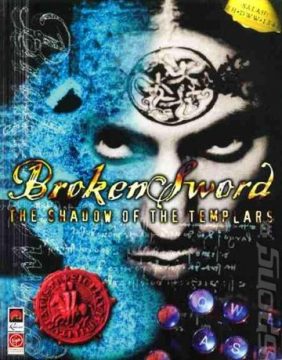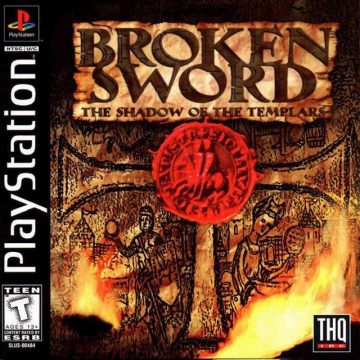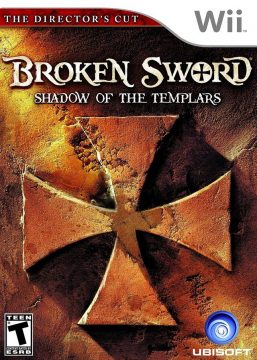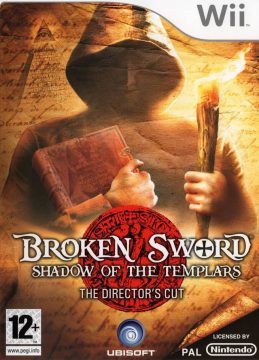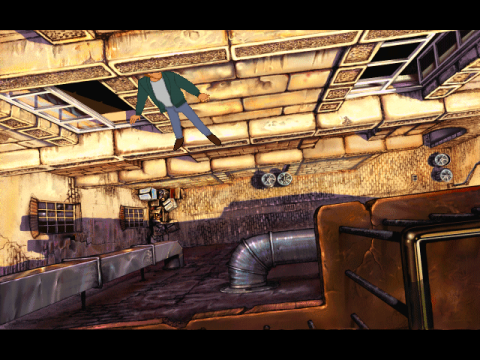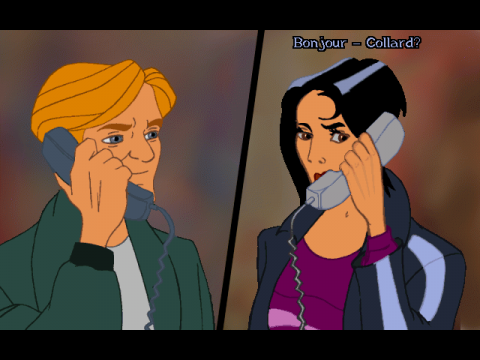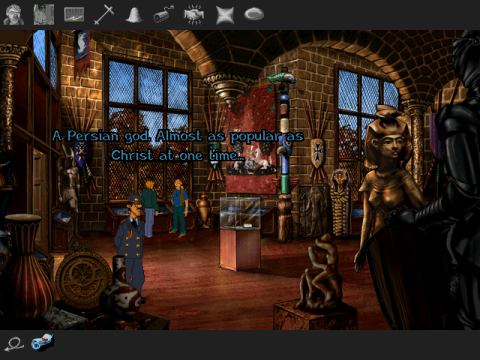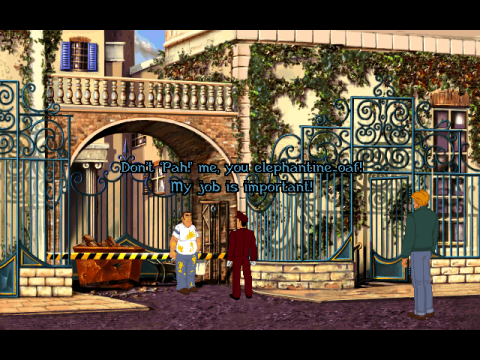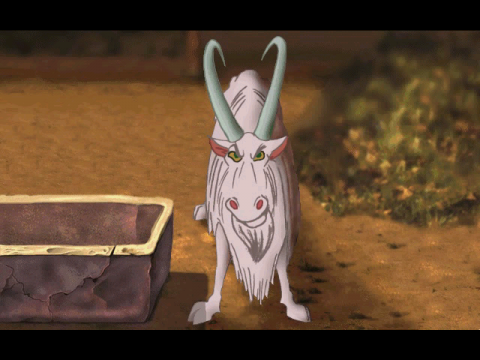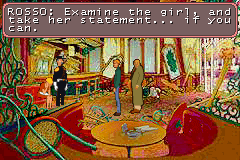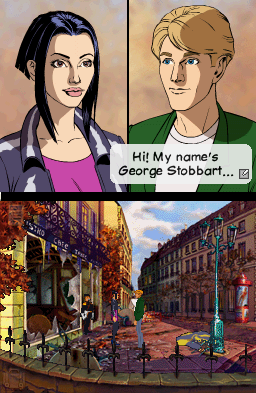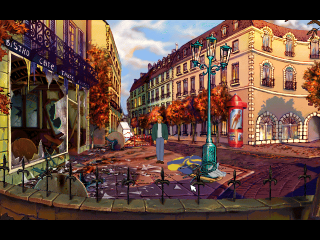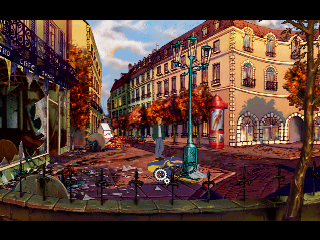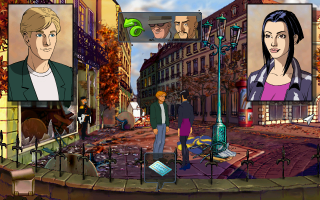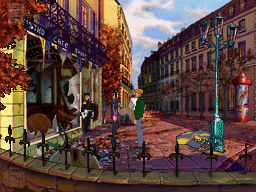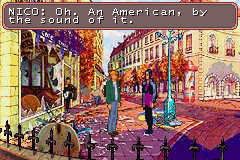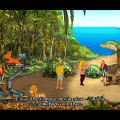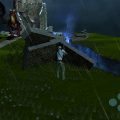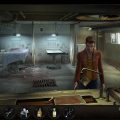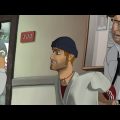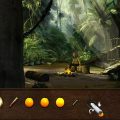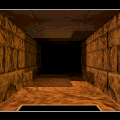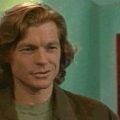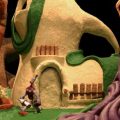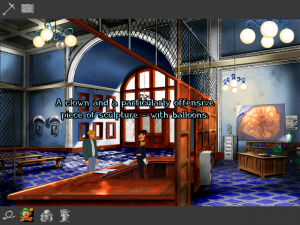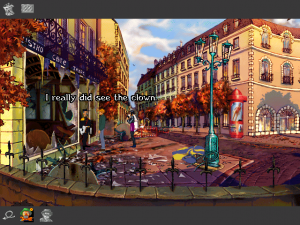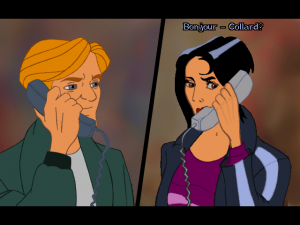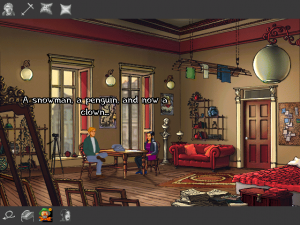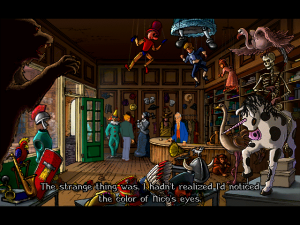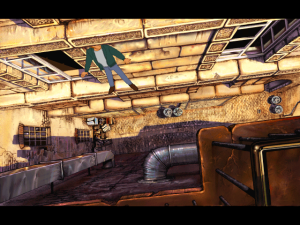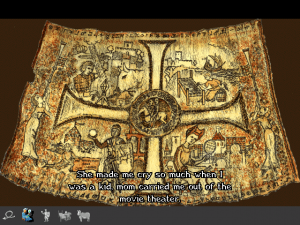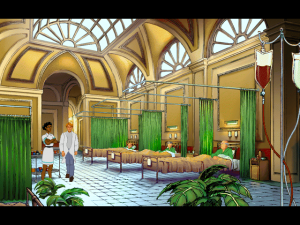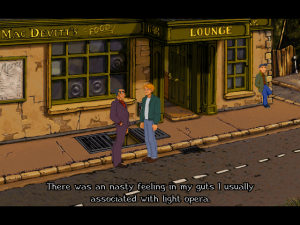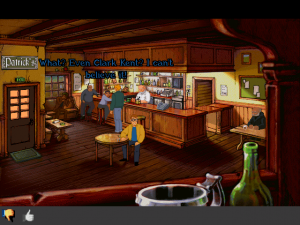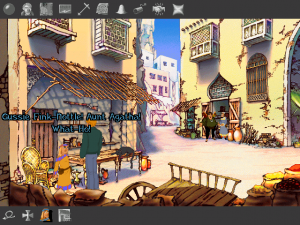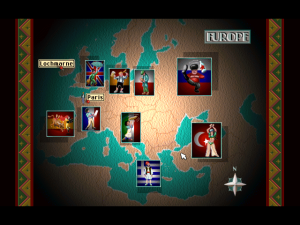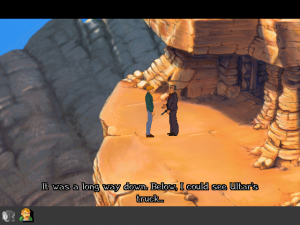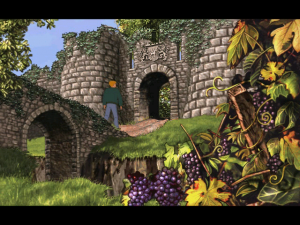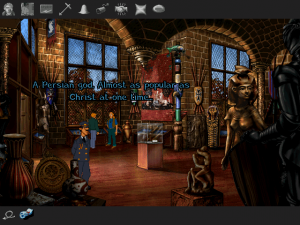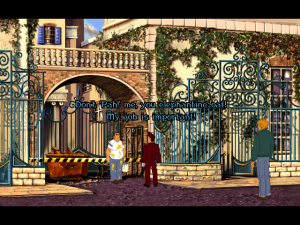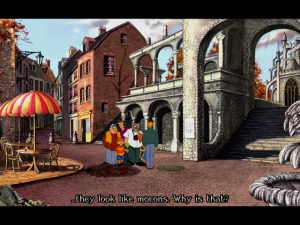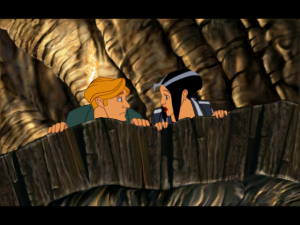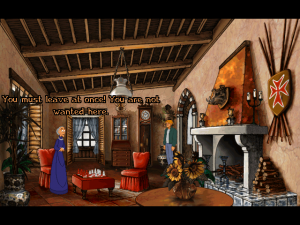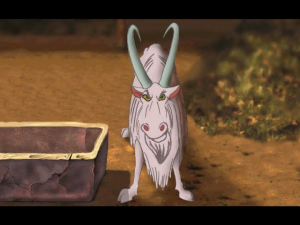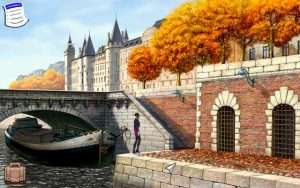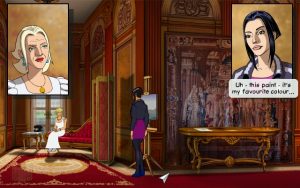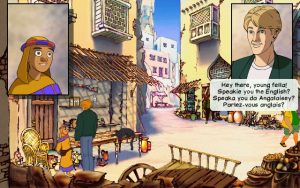- Broken Sword: Shadow of the Templars
- Broken Sword II: The Smoking Mirror
- Broken Sword: The Sleeping Dragon
- Broken Sword: The Angel of Death
- Broken Sword 2.5: The Return of the Templars
Revolution Software was founded in 1990 by a group of British software developers unhappy with the current state of adventure gaming. At this time, most successful adventure games were made by Sierra, which particularly frustrated one of the founders, a man by the name of Charles Cecil. Their goal, of course, was to push it forward, revolutionize it. Their first game was Lure of the Temptress, their first game using their Virtual Theater engine. Though it found only minor success, their next game, Beneath a Steel Sky, found considerably more success. It was a dark, serious story about an oppressive government, and yet, it was filled with quirky characters and somewhat silly dialogue, marking its British origins. Their next game, however, would go on to become one of the best adventure games ever made: Broken Sword.
Throughout four games (and one particularly decent fan game), the heroes – American lawyer George Stobbart and French photojournalist Nico Collard – find themselves investigating murders and becoming involved with huge global conspiracies. Many of them revolve around ancient and mythical artifacts – the series is particularly enamored with the Knights Templar, an ancient foundation created during The Crusades. Although technically disbanded centuries ago, some believe the organization still exists, and fight to control their lost treasures. Other mythical elements integrated into the stories are the Voynich Manuscript and the Ark of the Covenant. Many elements of fact and fiction are interwoven into the stories, often with tremendous depth. The only adventure game with the same attention to detail are Sierra’s Gabriel Knight series. But while Gabriel Knight is closer to Stephen King or Anne Rice, Broken Sword feels more like Indiana Jones, and exudes much of the same appeal.
The series is known by several different names across various countries. The first game was released as Circle of Blood in the United States, although all later releases keep the Broken Sword name. It’s known as Baphomet’s Fluch (“Baphomet’s Curse”) in Germany, Les Chevaliers de Baphomet (“Knights of Baphomet”) in France, La Leggenda dei Templari (“Legend of the Templars”) in Italy and La Leyenda de los Templarios (“Legend of the Templars”) in Spain.
Broken Sword begins with our hero, George Stobbart, relaxing on vacation outside of a small cafe in Paris. He’s slightly unnerved by the site of a clown that enters the cafe, who then proceeds to blow it up, killing a mysterious man with a briefcase. Disturbed with how close he came to death, and baffled at the extraordinarily bizarre situation, George sets to track down the killer and solve the mystery himself.
One of the first people George meets is Nicole “Nico” Collard, a native French photojournalist who begins to cover the case. Through their work together, George obtains a manuscript from the purported killer with several cryptic images. In conducting more research, they learn of the Knights Templar, an organization from medieval Europe that was disbanded long ago… or so they say. A new group of people, called the Neo-Templars, have banded together to uncover the mystical Sword of Baphomet (the “broken sword” referenced in the title) to rule the world from the shadows. In their quest to solve the murders, and stop the Neo-Templars, George travels around Europe and the Middle East, investigating a castle in a small Irish village, a cave out in Syria, and the mansion of an aging Spanish countess.
Despite the serious subject matter, Broken Sword still has somewhat of a light hearted tone. Part of this can be attributed to the absolutely gorgeous graphics. While the full screen cinemas are rare, the art style and animation recalls Don Bluth’s better films, something that looks mature without being too kiddie. The in-game graphics are rendered in SVGA, with gorgeously painted backdrops and exquisitely animated cel-style sprites. While not as advanced as Lucasarts’ The Curse of Monkey Island (released a year later in 1997), it still looks extremely impressive in motion. The downside is, in order to keep some sense of realism, the speed function has been disabled. That means you need to watch George slowly trot over the screen every time you need to do something, which gets especially exasperating on areas you tread through several times, like Nico’s apartment. Broken Sword is already a bit of a slow paced game, with tons and tons of dialogue, and the glacial action speed doesn’t really help.
Still, even though some might claim Broken Sword is overwritten, it’s actually one of its greatest strengths. Like Beneath a Steel Sky, there’s no such thing as a generic NPC – each character has their own bizarre quirks and mannerisms, all with cleverly goofy dialogue peppered with dry British humour. Within the first few minutes of the game, George is introduced to the dopey Inspector Moue and his gruff superior, Inspector Rosso, a practitioner of “psychic detective skills”. Eventually when you wind up in Syria, you meet a young boy who learned English by watching Jeeves and Wooster (“What-ho!”) and a middle aged couple named Pearl and Duane, who claim to run a greeting card company in Ohio but may or may not actually be involved with the US military. A seemingly innocuous historian named Angre Lobineau also ends up as a recurring character in nearly all of the Broken Sword games, as George’s rival for Nico’s affections. And these says nothing of the assassin, who likes to murder people while wearing a number of bizarre outfits, including penguin costumes. The game is so full of characters like these that it’s a delight running through each of their conversation options.
George, too, is a likeable leading man. Although he seems a bit bland in the beginning, his understated sense of humor and every man attitude has its own special charm, largely in part of some excellent voicework by Rolf Saxon, who plays the role in all four Broken Sword games. Although most of the game is presented as the present, George narrates all of his thoughts – item descriptions and such – in the past tense, as if he were relating it as a story. Nico, unfortunately, is a bit underused (at least in the original release) and spends most of the game sitting in apartment while George roams around Europe. It’s only at the end that a romance is shoehorned in, and it’s a bit jarring.
The puzzles generally aren’t too difficult, and a number of them are solved by themselves by simply exhausting all available dialogue options. There aren’t many objects to interact with on a given screen, so it’s usually easy to piece together the solution. The only problem comes with actually finding those hotspots, as some of them are extremely tiny, or aren’t immediately apparent. Like the rest of the game, the puzzles are occasionally a bit silly, as one requires that you acquire a stolen toilet brush, which has been repurposed and used by a street vendor as a basting tool. (Eww.) There are a handful of spots where you can get killed, although they’re mostly limited to a few sections where you need to react quickly to use certain items or bits of scenery before an enemy attacks you. Each of these is accompanied by a unique cinema of the killer disposing of your body, which is a bit chilling. There’s also the infamous goat puzzle, where you need to outwit a rather diabolical looking animal. The solution isn’t that hard, but getting it to function correctly is something in and of itself.
Broken Sword uses an upgraded version of the Virtual Theater engine used in Beneath a Steel Sky. It works mostly the same way – just highlight something and left click to operate it, and right click to look at it. The dialogue options are a bit different though, giving you icons to talk about specific topics or various items in your inventory. The orchestral soundtrack is sparsely used, but it’s effective when it flares up, usually when solving a puzzle or finding an important clue.
Other than some arguable pacing issues, and a conclusion that feels slightly rushed, Broken Sword is a completely fantastic game, certainly deserving of its status as one of the best adventure games ever made, and a true classic.
Broken Sword was initially released on the PC, under a variety of titles in different territories. It was also ported to the Playstation not long after its initial release. While the resolution needed to be downgraded, so it doesn’t look quite as crisp, most of the animation is intact, and it still looks pretty decent. Unfortunately, the frequent load times when moving from screen to screen slow the pacing down ever further, and it’s a bit awkward to move the cursor with the control pad. Still, it was fairly successful for an adventure game on a console, which largely accounts for why many of the later games were also ported to home gaming systems.
Broken Sword was also released for the Game Boy Advance in 2001. In downgrading the graphics for the portable format, the backgrounds have been mangled into a visual trainwreck, and the animation looks terrible. Obviously there’s no voice acting, but significant chunks of the dialogue have been completely removed. The cursor control has been removed, and instead you directly control George, with little icons that pop up when you’re next to a hotspot. There are also a handful of game breaking bugs that can screw you over if you approach them improperly. While it’s really one of the only graphic adventures on the Game Boy Advance, that doesn’t excuse its shoddy quality. The only interesting thing is an Easter Egg – an extra room in the sewer beneath the cafe – that ties in with The Sleeping Dragon, which was released around the same time as this port.
With the resurgence of popularity of adventure games in 2009 – perhaps due to the success of games like Phoenix Wright on the DS, and Telltale’s Sam and Max and Strong Bad games on the Wii, along with the proliferation of ScummVM – Revolution revisited its classic, dubbed Broken Sword: Director’s Cut, and published by Ubisoft. It was initially released for the Wii and DS, with versions for the PC and iPhone/iPod published over a year later. It’s more than just a quick and dirty port though, because it expands greatly on the original. The most notable is amping up Nico’s role in the story, with several new segments where you play as her and investigate the death of Pierre Carchon, an incident which appeared in a newspaper in the original release, but was never expanded upon. The Director’s Cut begins on Nico’s new adventures before moving on to the scene with George and the explosion of the cafe, and then the view alternates between the two for a few segments. However, once George leaves for Ireland, the game focuses solely on him up until the end. Nico’s sections are okay, but her introduction isn’t as impactful as George’s, and are only really interesting for fans who want to learn more about the character.
All of the characters now have dialogue portraits provided by Dave Gibbons, who drew the Watchmen and previously worked with Revolution on Beneath a Steel Sky, and also illustrated a small promotional comic for the Director’s Cut release. These portraits are not animated, but do change expressions with the dialogue. New dialogue has been recorded for the new segments – Rolf Saxon reprises his role as George, naturally, while someone new does Nico – but they didn’t record or remaster any of the old dialogue. As a result, some passages are mishmashes with varying quality, and in Nico’s case, different voice actresses.
Some of the dialogue has been touched up a bit too, and not necessarily in a good way. In the original game, after the bombing, George says:
“As I picked myself up, all I could hear was the ceaseless drone of traffic. Life went on around me, but the explosion was to change my life forever.”
In the Director’s Cut, this line becomes:
“As I picked myself up, I was really angry. One minute I was on vacation and the next the cafe was exploded by a guy in a clown costume. I knew right away what I was going to do. I was going to find that clown and bring him to justice. Because Justice matters. Justice is up there with Liberty. And Equality. And er… Fraternity. After all, that’s why I studied law, wasn’t it? Well, that…and the money, of course.”
Although it sounds hokey, this was probably changed to explain George’s motives a bit more clearly. After all, in the original release, George gets involved with the mystery on a whim – a mystery which requires traveling around the globe and facing death on at least a few occasions – which required some suspension of disbelief.
You can also no longer die, which naturally means all of those cutscenes were removed. It’s kind of a shame, and a bit of an overreaction to the criticism of the rampant death scenes in older adventure games, especially since Broken Sword was fairly conservative in that regard anyway. It would’ve been better to keep them and simply given an option to restart immediately before death, like the later games in the series. Some of the hotspots have been removed too, although the goat puzzle has been simplified.
The DS version completely lacks voice acting, which is disappointing, but not unexpected. The top screen is usually devoted to the character portraits, with the action taking place on the bottom screen. Despite the lower resolution, the animation is still clean, and it’s leaps and bounds beyond the Gameboy Advance version. By tapping the stylus, you command your character to move, while holding down the stylus and tracing it over the screen will reveal any hotspots, which you can then interact with. The iOS version is similar, but has full voice acting and runs at a higher resolution.
Despite the original PC release being available for years for barely more than a couple of dollars, Ubisoft decided to price the Wii version at $50 in the US, and in some places of Europe, 60 euros. Thankfully by the time it was released on the PC and iOS platforms, the price dropped significantly, making it more easily recommandable. The GOG version includes both the original version and the Director’s Cut.
Quotes
George: Woah! Don’t shoot! I’m innocent! I’m an American!
Moue: Can’t make up your mind, huh?
George: Let’s just say I’m working in the interests of truth and justice.
Todryk: Ah, Thank God, I thought you were the police.
George: You speak very good English for a French girl.
Nico: Thanks. You speak very good English for an American.
George: Look Sergeant, the Inspector gave me his card.
Moue: Yes, m’sieur. He wants you to advise him if you have any information concerning this case.
George: Well, I’d be glad to talk with him, but I don’t want him working his psycho-weirdness on me.
Moue: Ah! Non, monsieur, you are confusing the science of parapsychology with witchcraft.
George: Oh yeah? What’s the difference?
Moue: We don’t do sacrifices.
George: It’s a weird thing but you could take the most intelligent people in the world…put them in their vacation duds and, Hey Presto!…they look like morons. Why is that?
George: You speak very good English.
Nejo: Thank you, sir. I learned from tapes that my uncle procured.
George: Oh. A language course.
Nejo: No, sir. “Jeeves and Wooster”. Gussie Fink-Nottle! Aunt Agatha! What-Ho!
Links:
Revolution Software Web site of the developers.
Broken Sword: The Sleeping Dragon Official site of the third game.
Broken Sword: The Director’s Cut Official site for the re-release.
SCUMMVM Grab this to run the first two Broken Sword games on nearly any operating system.
Screenshot Comparisons
